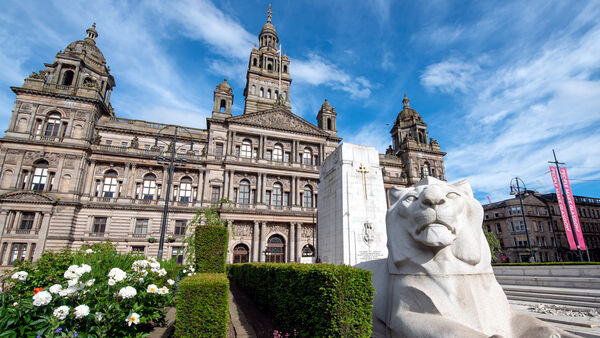Europe’s Authentic, Lively Second Cities
By Rick Steves
Each European country has its marquee city that attracts the vast majority of travelers — think Rome, Paris, Amsterdam. And all too often, that tourist-pleasing destination is a traveler's one and only stop.
While I'd never suggest skipping those places entirely, I like to complement them with a visit to the country's "second city." In fact, if you have four days to spend in any of these capitals, I recommend cutting your visit a day short to make time for these cities.
While lacking the popularity and the bucket-list sights, Europe's second cities tend to enjoy a creative edge, a strong civic spirit, a Rust Belt toughness, fun-loving eateries with cutting-edge menus, entertaining street art…and far fewer tourists, which also means lower prices, a more authentic welcome, and arguably a more honest cultural experience.
In Portugal, visitors flock to Lisbon. But the second city of Porto — three hours north by train — is smaller and more manageable, with more than its share of diamond-in-the-rough architecture. European Union money has been funding upgrades to its public transportation system and historical sites. Tourism here has taken off in a big way (thanks largely to cheap flights to Porto's international airport). Locals are rising to the occasion, filling the characteristic streets with trendy eateries and boutiques. And, as a plus for wine lovers, it's the birthplace of port.
In Scotland, the capital city of Edinburgh — with its prominent castle, its Royal Mile, and its romantic cityscape — grabs travelers' attention. But just a one-hour train ride away, funky Glasgow entertains with a laid-back attitude, sassy street murals, and Scotland's best food and live music scene. (Glaswegians like to say, "We have more fun at a funeral than people in Edinburgh have at a wedding.")
In France, the great sights of Paris dominate most visitors' itineraries. But I've enjoyed wonderful days in the livable culinary capital of Lyon, and in the bustling Mediterranean shipping center of Marseille. The same goes for London — understandably England's top draw — and a whole list of rejuvenated postindustrial cities that Anglophiles love to explore: Manchester, Birmingham, Liverpool, and more.
Brussels, the capital of Belgium and the European Union, boasts the stunning Grand-Place. But after you've strolled through that thrilling square, nibbled some pralines, and seen the Manneken-Pis, you may find yourself just killing time. Why not hop on a train to explore the equally historic and entertaining design capital of Antwerp? The city's sights are on par with the best in Belgium, but Antwerp is equally enjoyable without a sightseeing agenda. Come for the fun-to-explore neighborhoods, abundant al fresco café tables, and an inviting main market square with a carillon that jingles the hour.
Visitors to Ireland shouldn't miss Dublin. While they're at it, they can take a short train ride up to visit Northern Ireland's capital, Belfast, with glittering architecture, an energetic commercial metabolism, and important 20th-century Irish sights.
Berlin has world-class museums and Cold War history. But the German capital is also swarmed by international travelers. Meanwhile, Hamburg has rebuilt its futuristic and fascinating harborfront, and most visitors are Germans in town to experience the city's legendary nightlife.
This also works on a regional level. Exploring the countryside west of London, the stately Georgian city of Bath is a big draw — and rightfully so. But if you can squeeze in a side trip, the redeveloped port city of Bristol is just a 20-minute train ride away and is energized with college students and street art (Banksy was born in Bristol, and a handful of his legendary street paintings still dot the town).
If I turn my sights closer to home, this approach works stateside, too. I'm proud to be from Seattle. But after poking around Pike Place Market, Pioneer Square, and the Space Needle, why not head down the road to Tacoma to check out the eclectic food scene and Dale Chihuly's iconic works in the Museum of Glass?
I've been thinking about why I tend to favor Europe's second cities. In most cases, there's a reason these places never quite managed to rise to the status of "leading city." Often it's because they were once the center of an industry that fell on hard times. Or maybe they just have a long legacy of always playing second fiddle.
But everyone loves an underdog. And maybe that's why my most endearing travel memories tend to take place in these underappreciated, often overlooked destinations. They may not have the cachet or the world-famous sights. But they more than make up for that with a resilient spirit, a lack of pretense, an easygoing charm, and an exuberant creativity. Unshackled by the obligation to be their country's role model, second cities are free to just be themselves. And that's why they're so wonderful.

